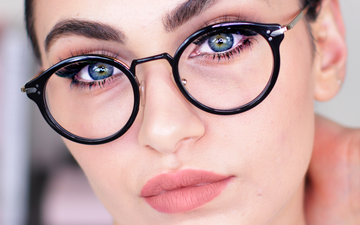Wearing the wrong prescription glasses or contact lenses can be uncomfortable and frustrating, but can it actually harm your eyes? Many people wonder if using incorrect lenses could lead to permanent damage or worsening vision. In this article, we’ll explore the effects of wearing the wrong prescription, the symptoms it can cause, and what you should do if you suspect your glasses or contacts aren’t right for you.
What Happens When You Wear the Wrong Prescription?
If your glasses or contact lenses have an incorrect prescription, your eyes have to work harder to focus. While this doesn’t cause permanent damage, it can lead to various temporary symptoms, including:
Blurry vision: Objects may appear unclear, making it difficult to see at certain distances.
Eye strain and fatigue: Your eyes may feel tired or sore after prolonged use.
Headaches: Incorrect prescriptions can cause tension headaches, especially after reading or screen time.
Dizziness or nausea: Some people experience motion sickness-like symptoms due to visual distortion.
Difficulty concentrating: Struggling to see clearly can make tasks like reading or driving challenging.
These symptoms can be particularly noticeable if your prescription is significantly off or if you’ve recently switched to a new one that your eyes haven’t adjusted to yet.
Can the Wrong Prescription Make Your Vision Worse?
A common myth is that wearing the wrong prescription will permanently damage your eyesight. However, this is not true for most adults. While incorrect glasses or contacts can cause discomfort, they don’t cause long-term harm to your eyes.
For children, however, the situation is different. If a child wears an incorrect prescription for an extended period, it may interfere with proper visual development, potentially leading to amblyopia (lazy eye) or other issues. That’s why it’s crucial for kids to have regular eye exams and wear the correct lenses.
Common Reasons for an Incorrect Prescription
If you’re experiencing discomfort with your glasses or contacts, your prescription might be incorrect due to:
Outdated Prescription: Your vision changes over time, so an old prescription may no longer be accurate.
Measurement Errors: An incorrect pupillary distance (PD) or lens height can affect how well your lenses work.
Adjustment Period: If you recently switched to a new prescription, your eyes may need time to adapt.
Wrong Lens Type: Wearing single-vision lenses instead of progressives (or vice versa) can cause issues.
Manufacturing Mistakes: Sometimes, glasses or contacts are made incorrectly due to lab errors.
What to Do If Your Glasses or Contacts Feel Wrong
If you suspect that your prescription is incorrect, follow these steps:
Give it time – If you just got new glasses, your eyes may need a few days to adjust.
Check for errors – Ensure your lenses match the prescription given by your optometrist.
Schedule an eye exam – If discomfort persists, visit an eye doctor to confirm your prescription.
Consider high-quality lenses – Poorly made lenses can contribute to discomfort. Investing in high-quality eyewear, like those from Fondvue, ensures better visual clarity and comfort.




